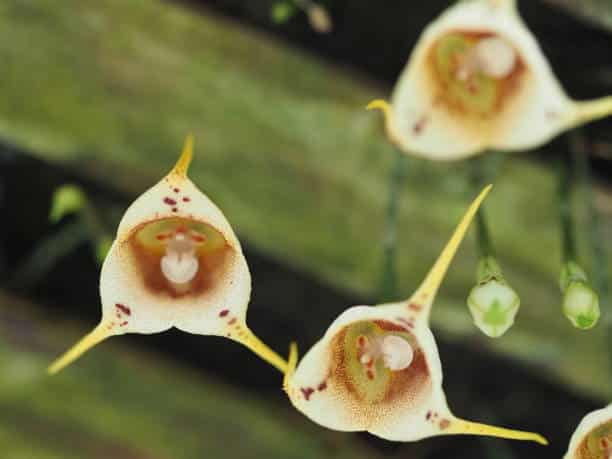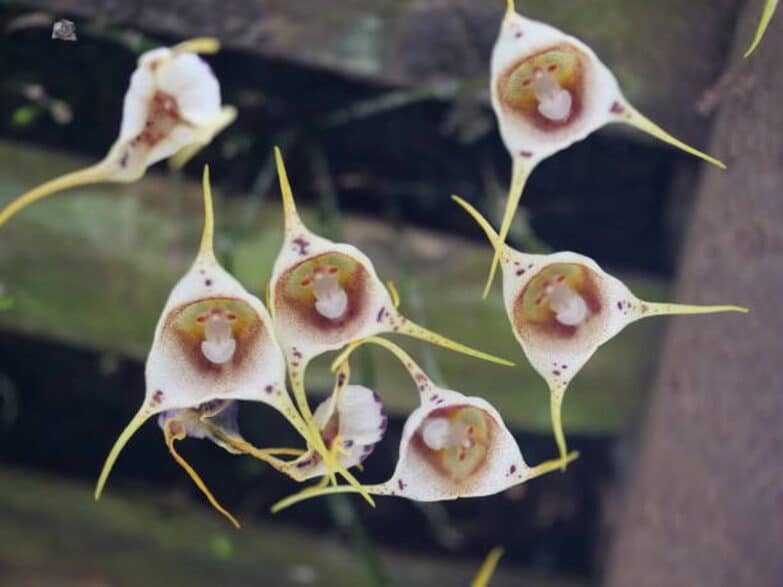The Monkey Face Orchid, scientifically known as Dracula simia, is a fascinating spectacle in the floral world. Named for its peculiar, monkey-like face formed in the flower’s center, this plant captivates enthusiasts with its unique aesthetics and care needs. For those interested in expanding their botanical knowledge and collection, learning to nurture this intriguing plant can be a rewarding journey.
Understanding the Monkey Face Orchid
Before diving into care requirements, it’s beneficial to understand the peculiarities of the Monkey Face Orchid.
Origin and Habitat
The Monkey Face Orchid hails from the cloud forests of Ecuador and Peru. These high-altitude environments are humid, dimly lit, and have a consistent temperature, contributing to the specific care needs of this orchid.
Unique Aesthetics
The monkey-like face, which gives the flower its common name, is a result of the intricate shapes and patterns on the orchid’s bloom. Notably, this face is not always visible and often depends on the angle of viewing.
Growing Conditions
The growing conditions for Monkey Face Orchids need to mimic their natural habitat. Here’s how you can achieve that in your home or greenhouse.
Light Requirements
These orchids require low to medium light intensity, similar to their native cloud forest conditions. East or north-facing windows are ideal. If light intensity is too high, the leaves may develop a red tint, indicating potential sunburn.
Temperature and Humidity
Monkey Face Orchids thrive in moderate temperatures, ideally between 60 and 75 degrees Fahrenheit. They also require high humidity, around 70-100%, which can be achieved with a humidifier or placing the plant in a humidity tray.
Watering and Feeding
Understanding the watering and feeding needs of the Monkey Face Orchid is key to keeping this unique plant healthy and thriving.
Watering
The Monkey Face Orchid prefers to stay consistently moist but not waterlogged. Watering frequency depends on the potting medium and environmental humidity, but typically, watering once or twice a week is sufficient.
Fertilizing
This orchid benefits from regular feeding during the active growing season (spring to early fall). Use a balanced orchid fertilizer diluted to half-strength every two to three weeks. Reduce feeding during the winter rest period.
Repotting and Propagation

These aspects of Monkey Face Orchid care might seem challenging but can be managed with careful attention and patience.
Repotting
Repotting every couple of years is beneficial to refresh the growing medium. Choose a small pot and an orchid mix that retains moisture but allows for good drainage and air circulation. Be careful with the orchid’s roots during repotting, as they can be fragile.
Propagation
Propagation is typically achieved through division when the orchid has several mature growths. This process involves carefully separating a growth with its roots from the main plant and potting it separately.
Potential Challenges
Growing Monkey Face Orchids can come with a few challenges, which can be managed with vigilance and care.
Pest and Disease Management
Common orchid pests such as aphids, spider mites, and scale can affect Monkey Face Orchids. Regular inspections and immediate treatment using appropriate methods are necessary for pest control. Also, avoid overwatering to prevent root rot and fungal diseases.
Flowering
Monkey Face Orchids are known for their sporadic flowering habit. Patience is essential here, and maintaining optimal care conditions increases the chance of seeing their fascinating blooms.
Conclusion
Cultivating the Monkey Face Orchid might be a journey filled with challenges, but seeing the unique, monkey-like bloom is a reward worth the effort. Through understanding and mimicking the orchid’s natural environment, enthusiasts can successfully nurture this intriguing plant. Keep in mind that patience and consistent care are the keys to coaxing this unique flower into bloom.

